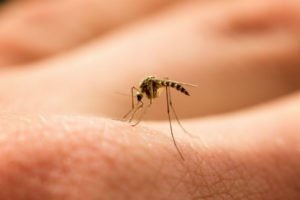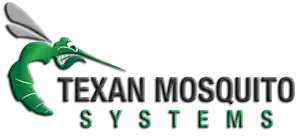Do you need a Humble TX mosquito yard treatment? Texan Mosquito Systems can help you maintain the look and feel of your backyard. The Greater Houston Area is consistently hit with mosquitos. The proximity to the Gulf of Mexico makes Houston the perfect place for mosquitos to thrive. In fact, Terminix ranked Houston as the third most mosquito-infected city in the United States.

Enjoy your backyard without any threats of mosquitos.
With that said, mosquitos are not just blood-sucking insects that can ruin your cookout. They are pesky insects that are a primary force in spreading disease. Mosquito-borne diseases are serious and affect millions of people every year. That is why mosquito control services are important. You can enjoy the outdoors with a simple mosquito treatment.
Of course, there are many actions you can take to eliminate the presence of mosquitos in your backyard. These actions can be done without spending a lot of money. However, the most effective way of removing mosquitos from your backyard is a misting system.
One of the most important aspects you need to know about stopping mosquitos is their life cycle. When you know how mosquitos reproduce and what they need, you can begin to eliminate their presence from your home.
The Life Cycle of a Mosquito
Water is an essential component of the mosquito’s life cycle. In order for female mosquitos to lay their eggs, they need water. Once they lay their eggs, three stages are complete within the water. As you can see, water plays a vital role in the life cycle of a mosquito. There are four stages to a mosquito life: egg, larva, pupa, and adult.
Egg
Female adults can lay up to 200 eggs at a time. She does this by finding a source of water at least half an inch deep. Depending on the type of species, she may lay the eggs on the surface of the water or soil that will be flooded by water later. The eggs resemble rafts when laid on top of the water. If they are laid in soil, then they are laid individually. Within 48 hours of being laid, the eggs should hatch and become larvae. Eggs that do not hatch can last through winter and hatch in the summer.
Larva
Once a larva hatches from its eggs, it will feed on the microorganisms and organic material in the water. Some species must swim up to the water for oxygen. Other species have tubes leading to the surface or attach to plants for oxygen. As the larva feeds, it molts too. Molting is the process of shedding their skin in order to make room for new skin. Every molt increases its size until the fourth, which leads to the pupa stage.
Pupa
The pupal stage is for resting, but that does not mean the pupa is unresponsive. The pupa can still swim around and respond to light. In most cases, they swim deeper into the water for safety. This process is similar to caterpillars encasing themselves into cocoons. Metamorphasis occurs, causing the caterpillar to turn into a butterfly. The pupa of a mosquito is very similar.
Adult

Adult females are the only ones to feed on blood.
Finally, the adult stage occurs about two days after the pupa. An adult will emerge from the pupa and begin to dry its wings on the surface of the water. At the same time, the adult will rest to let its body harden. Eventually, it will fly off to feed and mate a few days later.
The Dangers of Mosquitos
Mosquitos carry diseases that affect millions of people all over the globe. These diseases range in severity and do appear in the United States. It is important for homeowners to keep their families safe with a property misting system or preventative measures.
The following list is only a small sample of diseases carried by mosquitos:
- West Nile Virus
- Yellow Fever
- Malaria
- Zika Fever
- Dengue
- Chikungunya
These diseases and many more can be severe for some. For that reason, you should consider taking preventative measures or install a mosquito misting system.
Reduce Mosquitos in Your Backyard
There are steps you can take to reduce the mosquito presence in your backyard. Firstly, you should remove areas of standing water. Often times, we leave the junk in our backyards like tires, barrels, and buckets. These items can hold water for long periods of time. Remove them from your home or empty them out.
Other areas you should be mindful of include a birdbath, pond, fountain, gutters, and pool. Ensure your gutters are clean and do not hold water. When it comes to birdbaths, you can remove the water every week or treat the water. The same goes for your fountain, pool, and pond.

Maintain your yard by pulling weeds and cutting the grass weekly.
Secondly, you should treat the sources of water that cannot be removed like a pond, fountain, or pool. Chlorine pools kill mosquito larva, so ensure it is regulated and the pump is working correctly. For other sources of water, you should use Mosquito Dunks, which is an organic treatment option that targets mosquito larva and pupa. You can use these in your coy ponds or birdbaths because they do not harm other animals or aquatic vegetation.
Finally, the last thing you can do to reduce mosquitos is to keep your grass cut to at least 5 inches and remove overgrown weeds. Mosquitos love resting in tall grass and weeds. So, remove the place they like to rest, so they avoid your backyard.
Humble TX Mosquito Yard Treatment
Mosquitos are a nuisance, and they should be the last thing you have to worry about when trying to relax in your backyard. In order to protect your family and friends from blood-sucking insects, contact Texan Mosquito Systems today. We have years of experience in the field of pest control.
So, give us a call at (713) 766-1090. We can provide installation, maintenance, and repair services for you. Before we leave you to your system, our technicians teach you how to use it. They also help you replace the fuel tanks. This is important so you can continue to enjoy your mosquito-free backyard. So, stop looking for a Humble TX mosquito yard treatment and start calling!
Fun Facts about Humble
- First settled in the early 1800s by Joseph Dunman.
- In 1904, the first railroad entered the city, and Humble was incorporated in 1933.
- Humble has attractions such as the Botanical Gardens, Humble Historical Museum, and Sheldon Lake State Park.
- Find more facts about Humble here.
